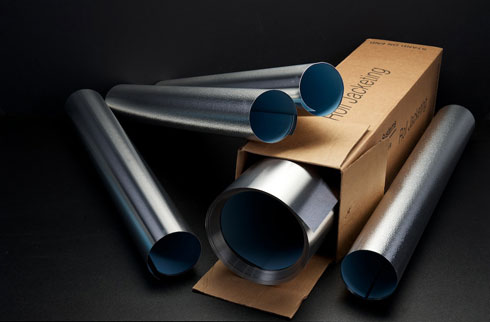Could the vapour seal on the insulation be damaged leading to condensation forming on the pipe causing pitting and pin holes.
Phenolic foam pipe insulation problems.
Phenolic foam rigid insulation was introduced in the u s.
Phenolic foam insulation used to be available in board form but today is only sold as a type of foamed in place insulation.
It offers many advantages including excellent density and an r value of 4 8 per inch of thickness which forms an effective barrier against heat transfer and thus helps you save energy around the house.
Phenolic foam is used extensively in industrial heating and ventilation applications such as pipe and duct insulation.
The phenolic foam dust cannot be fully removed without washing it from the deck.
The resulting reaction produces a network of bubbles which is then cured into a foam.
The dust is mostly crushed insulation.
These foam materials are used in open hot and cold water supplies and closed water systems such as heating or air conditioning systems because of the materials excellent thermal insulation properties.
Questions are occasionally asked about any possible corrosive effects of.
In order to prove that insulation is the problem you need to establish with all certainty that the.
Many phenolic foams do not burn at all when exposed to an e84 flame test yielding a perfect 0 0 rating.
Pinhole or pitting corrosion problems are common with copper pipes steel water pipes and stainless steel steam pipes when insulated with phenolic foam and the pipework gets wet.
In the 1980s and sold by beazer east and johns manville but serious corrosion problems resulted in legal action and both companies ceased production in 1992.
The copper pipework in question is a chilled water service covered in phenolic foam which is only 4 5 years old.
Phenolic insulation is becoming a popular solution to these problems.
All phenolic foam is rated with an astm e84 25 50 class a flame and smoke rating meaning that flame and smoke spread will not exceed 25 feet and 50 feet respectively if the insulation ignites.
Phenolic insulation exposed to humidity or direct moisture such as roof leaking creates sulphonic acid.
Phenolic insulation for use in chilled water applications is produced.
The previous roof system was mechanically attached using screws that penetrate through the decking.
Phenolic insulation has low flame and smoke reaction to fire.
Phenolic materials consist of solids mixed with phenolic resin and a surface acting agent.
Properly applied phenolic insulation foam according to the epfa meets or exceeds international building insulation and fire regulations.
What is phenolic insulation.

